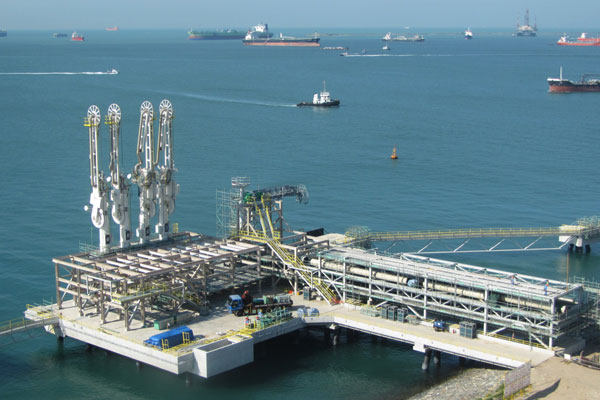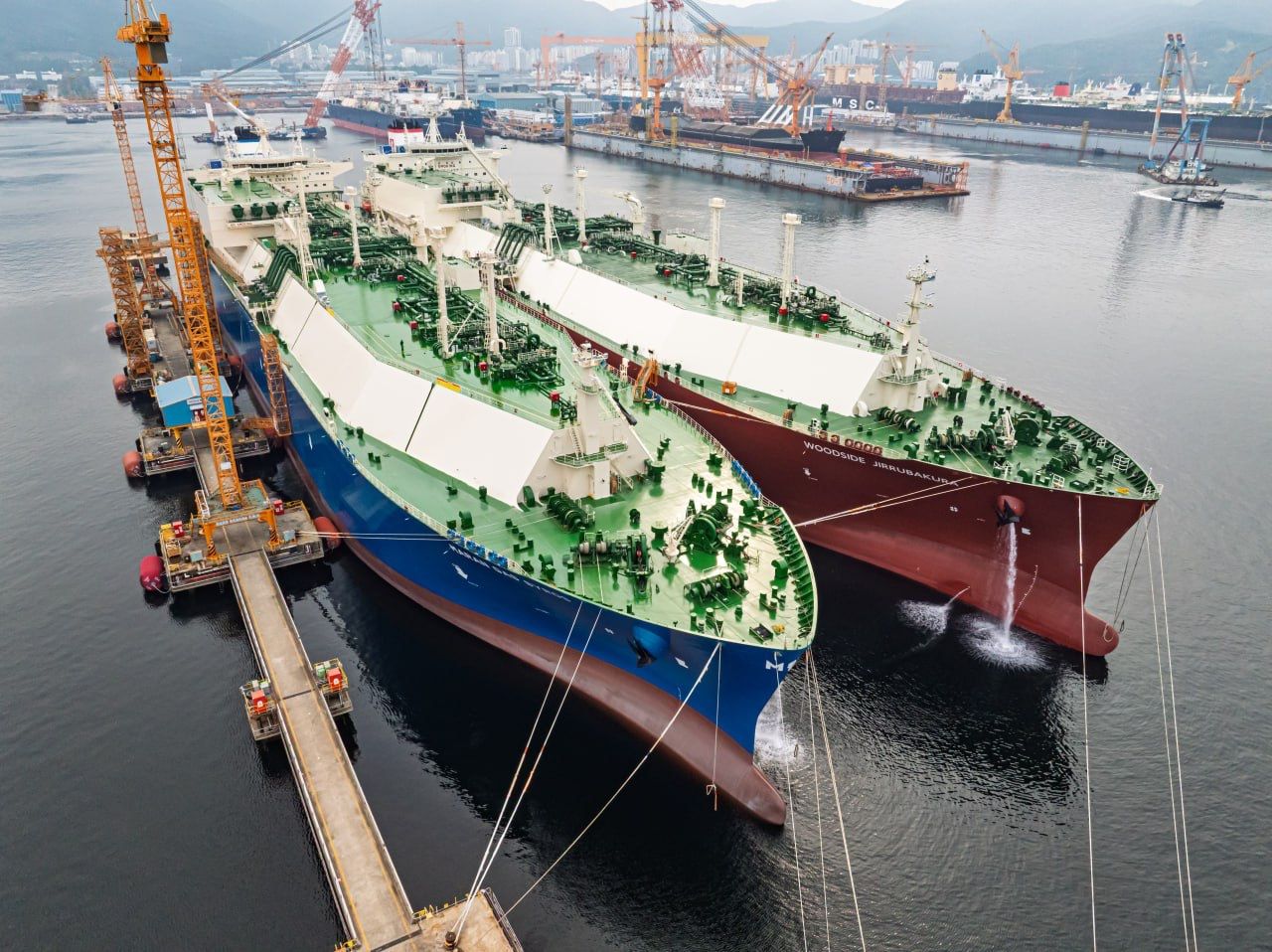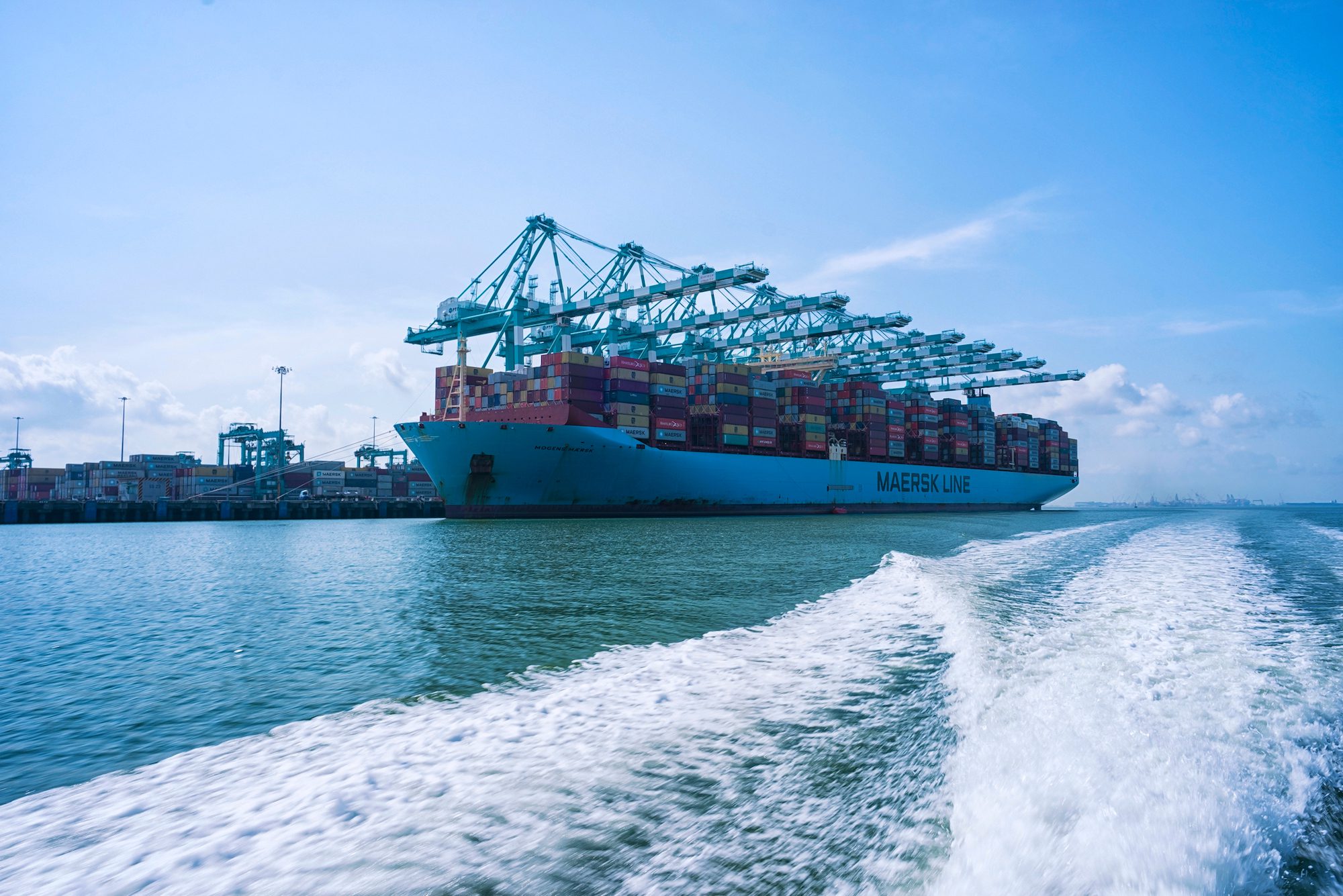LNG import jetty, image (c) Singapore LNG
March 26 (Bloomberg) — Singapore LNG Corp. is touting its experience running Southeast Asia’s biggest liquefied natural gas receiving terminal as a sign it can manage a second facility planned for the city-state.
John Ng, the company’s chief executive, says he’s up for the challenge when the government starts looking for an operator. While Singapore hasn’t said when the second terminal will start, industry consultants including FGE forecast it will be after 2020.
“We are always ready,” Ng said in an interview at his office on March 20. “Do we have the capability to build, design and operate the terminal? The answer is yes.”
As Asia overtakes Europe as the world’s biggest natural-gas importer, Singapore wants to tap burgeoning demand for cargoes and cement its place as the region’s LNG trading hub. The country, which uses gas for more than 90 percent of its electricity, is studying locations on the east of the island for a second terminal to support industries and fuel power stations, Prime Minister Lee Hsien Loong said last month.
“The SLNG team will probably be the operator because they will be more experienced and the government will be comfortable replicating the same model,” said Tony Regan, a Singapore-based energy consultant at Tri-Zen International Inc. He expects the terminal to start operations after 2020.
Asia accounts for 46 percent of global gas trade, according to the International Energy Agency, which identifies Singapore as best-placed to be a center for LNG trading. The region consumed 75 percent of the world’s LNG last year, data from the International Group of Liquefied Natural Gas Importers show.
Japan Demand
Singapore’s second terminal will have a capacity similar to the first, according to the Energy Market Authority, the regulator that oversees the country’s energy industry. The existing facility has three tanks that can handle 6 million metric tons a year. A fourth will be added by 2017, increasing capacity to 9 million tons.
The site can accommodate as many as seven tanks that could process 15 million tons annually, Lee said at the official opening last month. Japan, the world’s biggest importer, consumed about 87.5 million tons in 2013.
Sharon Tan, a spokeswoman for the EMA, said the regulator doesn’t have information yet about the process it will use to identify and select an operator.
Singapore has the only LNG terminal in Asia that can reload cargoes from storage, allowing traders to store gas during low- consumption periods before selling them during peak demand seasons in winter and summer. SLNG may make the third tank available for traders to carry out short-term transactions, Ng said.
Singapore Traders
Germany’s E.ON SE and Glencore Xstrata Plc are among companies that have hired LNG traders in the city as the market grows. Qatar Liquefied Gas Co., the world’s largest producer, is looking to expand in the region, Abdulla Al-Hussaini, the company’s marketing director, said in an October interview.
More terminals in the region will help boost trade volumes and establish more competitive and responsive LNG prices, according to Ng. About 27 percent of LNG supplies, or 65 million tons, are traded on a short-term and spot basis, according to the International Group of Liquefied Natural Gas Importers. The rest is bought and sold in long-term supply contracts with prices typically linked to the cost of crude oil.
LNG to be shipped over the next four to eight weeks to North Asia dropped to $15.80 per million British thermal units in the week ended March 24, down 20 percent from a record $19.70 on Feb. 3, according to New York-based Energy Intelligence.
Floating Terminal
The Energy Market Authority is studying whether to build the plant offshore on a floating facility, its CEO Chee Hong Tat said Feb. 26. SLNG, owned by the Singapore government, was formed in June 2009 by the EMA to operate the S$1.7 billion ($1.3 billion) first terminal on Jurong Island, which began commercial operations in May last year.
“I’m quite confident we have the capability to do the second terminal as a floating one,” said Ng, who became chief executive on Jan. 1, taking over from Neil McGregor. “The challenges are no less or no more than a land-based one.”
A floating storage and regasification unit, or FSRU, may be a better choice for Singapore’s eastern terminal as technology improves, according to Regan. FSRUs typically consist of LNG vessels anchored offshore to receive and store shipments before the supercooled gas is sent into an onshore pipeline system.
“FSRUs are cheap, quick to build and start, you can put in a second unit five years later to increase capacity and it gives Singapore, which is a small country, a lot more options where to place the second terminal,” said Regan.
– Chou Hui Hong, Copyright 2014 Bloomberg.

 Join The Club
Join The Club











